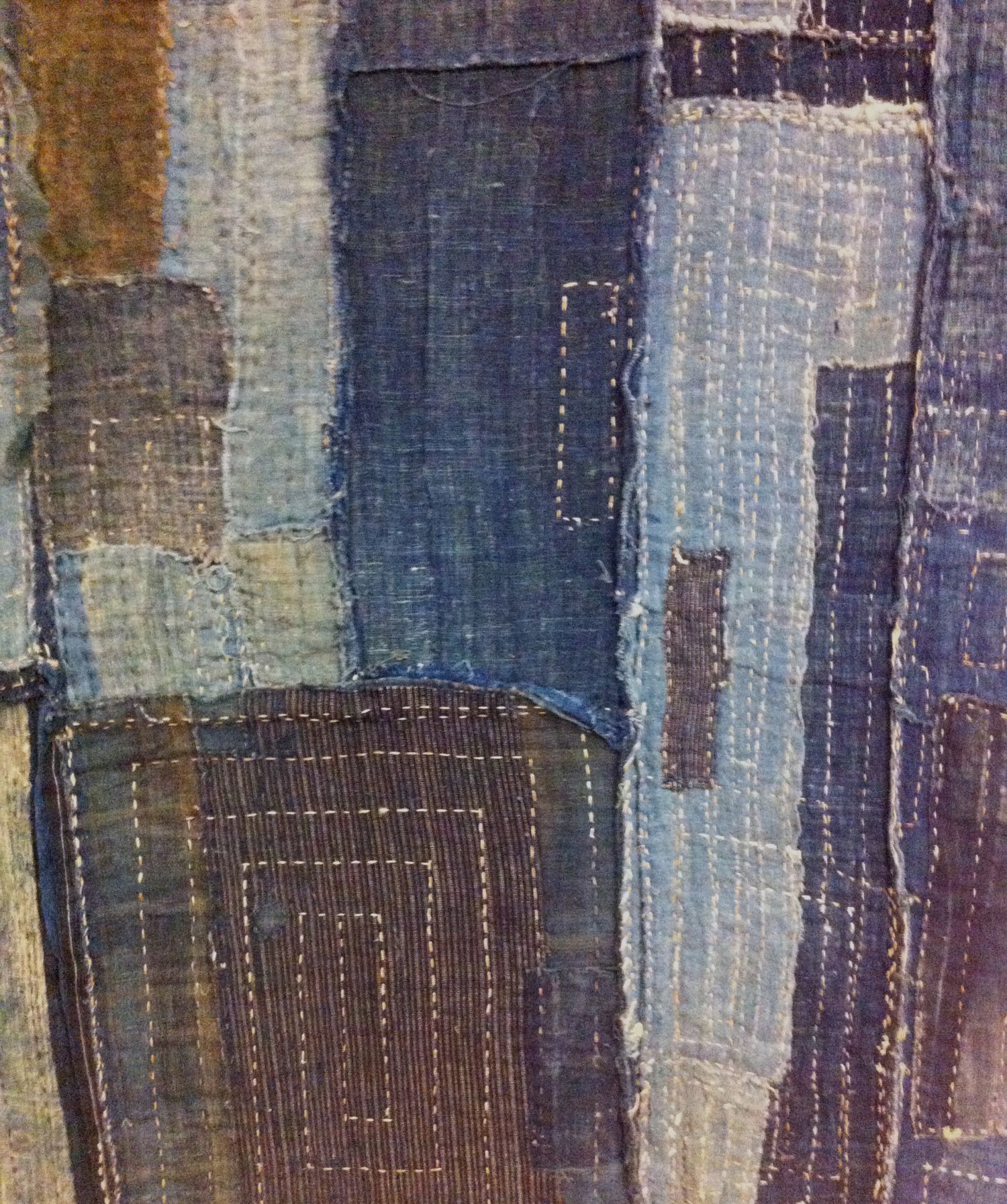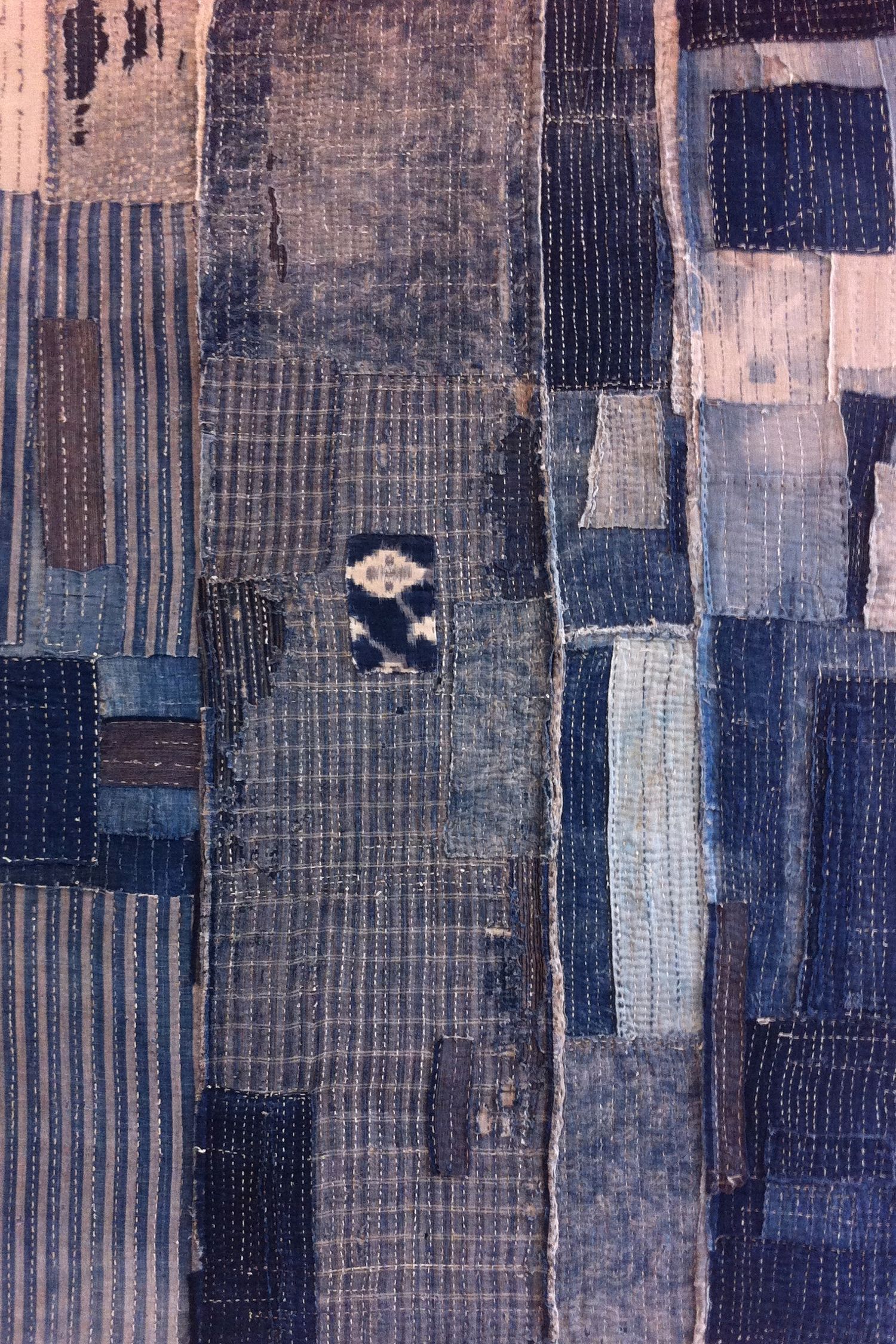Yesterday I went to see an exhibition of Boro textiles at Somerset House in London. Before I even got there, I was aware that there was a debate about the way the textiles were displayed. The exhibitor has made a deliberate decision to display the textiles stretched over boards and hung on the wall. Some feel that this is totally inappropriate. These were domestic textiles - clothing, futon covers, wrapping cloths - that are the product of a tradition of continuously patching and repairing cloth for utilitarian and economic purposes. Boro means something like "ragged" in Japanese. Displaying them in this way removes them from that context. It also imposes limitations - you can't view both sides, you lose the edges and the clues as to their original use. From being domestic artefacts with a life and a history, they become two dimensional art objects, to be appreciated for their visual qualities.
However, the visual impact of the textiles on the bright, white walls of the gallery was stunning. Misgivings evaporated as I walked into the first room. These are fascinating textiles and seeing them this way allows you to fully appreciate colour and composition. If it had been a museum show, you would expect more emphasis on the cultural context in which the cloths were made. But this is a selling exhibition and the exhibitor is consciously positioning them as fine art objects, priced accordingly.
Accident or "design"?
It's an interesting tension. The catalogue poses the question "Can art transcend function?" I don't believe that the people who originally made these cloths did so with a deliberate aesthetic intention. They were made to be used. Pieces of cloth were joined together to make a larger cloth. Holes and tears were covered with patches. The stitching is functional - just enough to hold the pieces together. But at the same time, the culture within which these cloths were made featured a strong craft tradition and a very considered approach to the most everyday activities and this comes through even in these so-called "rags". On a striped patch, the stitcher has followed the lines in the cloth. On another, it does look as though the maker made deliberate decisions about the colours and positioning of the patches. It does appear that some makers were paying attention to the visual effect of what they did. But it is unlikely they were ever made to be viewed as "art".
I think it says as much about us and our own cultural context that we do. We look at Boro textiles, with eyes that have become accustomed to modern, abstract art. We recognise some of the same qualities and accept their presence in a gallery setting. At the moment though this is apparently a predominantly Western thing. While I was there I overheard part of a conversation between one of the attendants and a Japanese visitor who was bemused to find these textiles presented like this, in a gallery. In Japan, Boro textiles are not valued in the way they are by Western collectors.
Leaving aside this debate, I spent nearly three hours looking closely at the textiles themselves. I couldn't face carrying my camera around London yesterday so these images are the best I could manage with my iPhone. What caught my attention was the layering of the patches - the way holes overlapped and revealed layers beneath - and the stitching. Most of the stitching was quite rough - some neater than others but it was the kind of stitching you make when you tack things together. There were traces of the individual makers in the size and rhythm of the stitches. I noticed the stitching usually followed a "route" - e.g. the maker would usually stitch around the sides of the patch and then into the centre in a continuous line. This meant the stitch line became a kind of path. Secondly, the stitching of the patches on one side of the cloth showed through on the other - so while the function of the stitching on the side you were looking at was obvious, there was this additional layer of stitching that hinted at what was happening on the other side. Often, bits of the stitching were missing so you had to interpret what was going on with incomplete information. I find this quite exciting. Also, the layering and stitching of some pieces made me think of a map - but a map that was showing multiple layers at the same time. Lots to think about here.
The exhibition is on until 26 April and there is a well illustrated catalogue to go with it. Details here.
Also, see this article for a very different approach to exhibiting Boro textiles.









